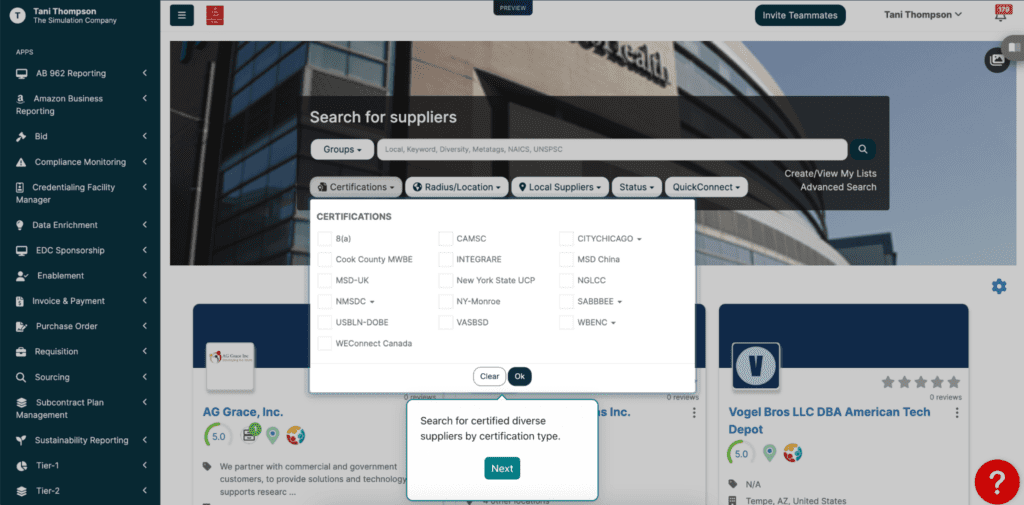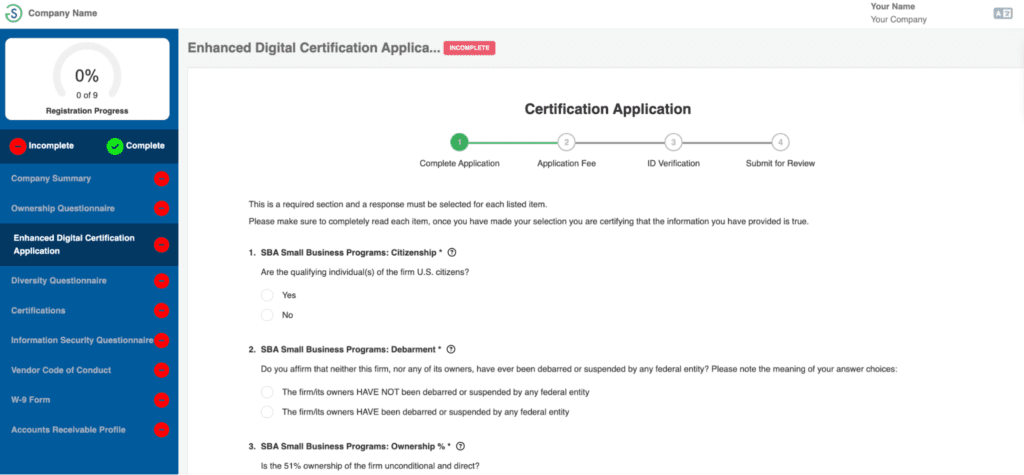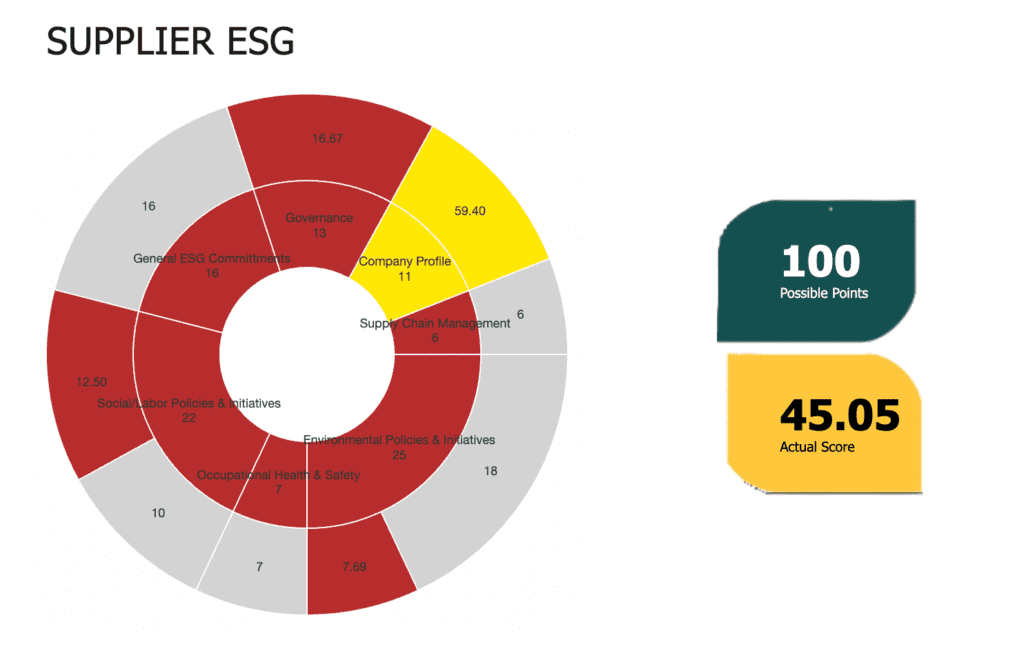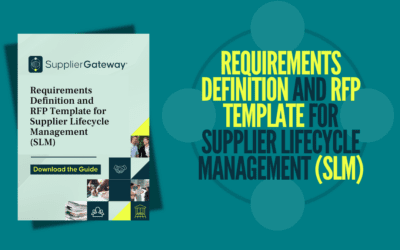Does this sound familiar? You have a few trusted suppliers who you’ve been working with for years, but the rest of your supplier base is a mystery. You have no idea what they’re up to day-to-day, or how their performance impacts your business.
If that describes you — you’re not alone. Many procurement and supply chain experts struggle with supplier relationship management. After all, sourcing, vendor onboarding, and managing lots of suppliers can be time-consuming and complex.
Supplier Lifecycle Management (SLM) is a powerful process that ensures your supplier selection results in predictable performance and cost savings for your business. In this article, we’ll discuss the basics of SLM and how you can use it to make designer decisions about your suppliers — all while saving time and money!
What is Supplier Lifecycle Management?
Supplier Lifecycle Management comprises of processes that help organizations manage supplier performance throughout their entire partnership. It involves the evaluation of potential suppliers and the ongoing monitoring of existing suppliers in order to identify any potential risks associated with them.
With SLM, buyers can be confident that they are receiving the highest quality product or service from their suppliers at all times. This ensures that customers will be satisfied and that businesses will receive a return on their investment. By analyzing data throughout the partnership, buyers can evaluate if their goals are being met, identify any needed improvements, and adjust business tactics accordingly.
Overall, supplier relationship management is an effective way to ensure that a company’s procurement process is operating efficiently and smoothly. It allows organizations to proactively manage supplier relationships while minimizing risks associated with doing business with them.
From identifying the best possible supplier to continually monitoring performance throughout the course of the partnership, SLM enables companies to stay ahead of potential problems and achieve their desired results.
Benefits of Implementing Supplier Lifecycle Management
Whether you’re part of a small business or a large organization, you’ll benefit from the greater understanding and control that comes with supplier relationship management.
With SLM, you can make sure you have an accurate view of the supply chain lifecycle, as well as insight into the full range of risks associated with managing suppliers. Here are some advantages of implementing SLM:
- Visibility into your supply chain to stay informed and make smarter decisions, faster.
- Better control over your suppliers by having detailed data for contract management, performance tracking, and risk assessment.
- Boost process efficiency by automating communication, digitizing documents, and streamlining processes.
- Build robust relationships with key suppliers by managing supplier performance from onboarding through retirement.
- Reduce costs associated with administrative tasks and optimize spend by leveraging supplier information to develop more competitive negotiations.
8 Stages of Supplier Lifecycle Management Process
Following a comprehensive framework to manage relationships and performance ensures that suppliers are effectively integrated, evaluated, and optimized to support the overall business strategy.
1. Qualification
Start by identifying whether or not a certain supplier meets your specific requirements. This stage involves gathering detailed information about potential suppliers, including their capabilities, financial stability, and compliance with industry standards.

SupplierGateway’s comprehensive search portal streamlines the qualification process.
Thorough qualification ensures that only suppliers who can meet your criteria are considered, thus reducing risks from the outset.
2. Evaluation
Once a supplier has qualified, they should be assessed based on:
- Product quality
- Risk factors
- Customer reviews
- Performance
- Other criteria specific to your needs
This evaluation can be based on audits, site visits, and assessments of their ability to deliver consistent quality and performance. Detailed evaluations bring clarity to the strengths and weaknesses of each supplier, facilitating informed decision-making.
3. Selection
Once the pool of eligible suppliers has been narrowed, a selection can be made. The ultimate goal in supplier selection is to choose a supplier that shows maximum potential value and the willingness to form a long-term strategic relationship.
Factors such as cost, reliability, technological capability, and alignment with company values are critical in making the final decision.
4. Onboarding
This step requires collecting necessary information and documents in order to have a supplier approved in the system. Onboarding includes setting up the supplier in internal systems, establishing clear communication channels, and ensuring that both parties are aligned on expectations and processes.

Welcome suppliers, request information, and maintain records in SupplierGateway’s onboarding portal.
Efficient onboarding sets the foundation for a smooth operational relationship and helps in integrating the supplier into your workflow.
5. Supplier Performance
Supplier performance management allows you to monitor suppliers and discover any risk factors before they become problems. Constantly monitoring supplier value and performance also ensures that suppliers are adhering to any contractual obligations.
This stage involves regular reviews, setting key performance indicators (KPIs), and using performance data to make informed decisions about the status of your partnerships. Effective performance management can lead to continuous improvement and ensure high standards are maintained.
6. Identifying Risk
Risk management is critical and yet often overlooked. Monitoring suppliers includes identifying risks to prevent unexpected events like a breach of contract, late deliveries, or low quality. This involves regular risk assessments, developing mitigation strategies, and maintaining a proactive approach to identify potential issues early.

Streamline supplier risk management with SupplierGateway’s Sustainability Assessments.
Effective risk management helps safeguard your business against disruptions and creates a stable supply chain.
7. Supplier Development
This stage involves working closely with suppliers to enhance their performance, investing in their success, and fostering creativity. To put this into action:
- Provide constructive feedback to help suppliers identify and address areas for improvement.
- Invest in joint training programs and share best practices to build their competencies.
- Establish clear performance targets and work together to develop action plans that align with your strategic goals.
- Facilitate open communication and create opportunities for innovation through regular meetings and brainstorming sessions.
- Recognize and reward improvements to motivate suppliers to continuously strive for excellence.
Strong collaborative relationships with suppliers create ideal conditions for innovation and growth.
8. Supplier Management
Cultivating positive and effective relationships with suppliers involves several strategic actions. Start by establishing clear communication channels to ensure both parties can easily share information and address issues promptly.
Regularly monitor and assess supplier performance using KPIs to maintain high standards and identify areas for improvement. Provide constructive feedback and recognize achievements to foster a collaborative atmosphere.
Implementing joint development initiatives and engaging in open, proactive communication can further strengthen these relationships. Clear contracts and timely payments also play a crucial role in building trust and reliability.
How to Streamline the Offboarding Process
Your supplier lifecycle management process isn’t complete until you’ve properly offboarded your suppliers. Offboarding is a critical step in the SLM process and can be a time-consuming, tedious task if it’s not done well.
With the right supplier onboarding platform, you can streamline your supplier offboarding process in a number of ways:
- Automated notifications: Send an automated notification to suppliers when their contract is about to expire or when their collaboration with your organization has ended. This helps ensure that all contractual obligations are met, and suppliers are updated on their status with your organization.
- Automated reimbursement: An automated reimbursement system helps reimburse any unpaid vendor invoices associated with a particular supplier as soon as they’re due, allowing you to keep better track of your financials and manage cash flow more efficiently.
- Online approval requests: With online approval requests, you can securely collect all required information from external suppliers — such as contracts and archiving documents — while keeping all of the data stored securely in one place. This data can then be used for auditing and reporting purposes, making vendor compliance management easier across multiple suppliers.
By streamlining your supplier offboarding process with technology, you can ensure that all regulatory requirements are met and that your vendors are up-to-date with their status within your organization — all at once.
Best Practices for Supplier Information Management
If you’re looking for best practices for supplier information management, here’s what you need to know.
For starters, it’s important to have a systematic and consistent approach for both gathering and maintaining supplier information. This includes having the right process in place for collecting data from suppliers, including:
- Contact details
- Internal documentation such as contracts, policies, and invoices
- Financial-related documents like bank statements or credit reports
- Any other relevant data that might be needed
You also want to make sure that your supplier master data is being maintained in an accurate and up-to-date manner. SupplierGateway’s Supplier Onboarding Platform helps you quickly onboard new suppliers and manage existing ones. Plus, our software makes it easier to offboard entire accounts when needed.
Here are some specific best practices to keep in mind when managing supplier data:
- Automate processes where possible.
- Focus on effective communication with suppliers at all stages of the relationship.
- Establish a policy outlining expectations for data security.
- Set up clear processes for setting up new accounts or updating existing ones.
- Monitor compliance with all agreements.
Leveraging Technology for Supplier Lifecycle Management Success
When it comes to leveraging technology for SLM, SupplierGateway’s supplier lifecycle management solution is the way to go.
Our Supplier Onboarding Platform makes it easier for buyers to streamline procurement processes, reducing costs and time required for onboarding and managing suppliers. Our platform provides you with a suite of tools that allow you to manage all stages of the supplier lifecycle, from supplier selection to onboarding, contract management, performance management, and offboarding.
Using our platform allows you to improve visibility into your supplier relationships, helping you reduce costs, avoid compliance issues, and make better decisions faster. Here’s how our platform can help:
- Automate tedious tasks like onboarding or due diligence processes
- Monitor supplier performance in real-time
- Generate comprehensive reports to track supplier performance
- Create a profile for each supplier in your network
- Foster collaboration between buyers and suppliers by providing a secure environment for data exchange
- Support two-way communication between buyer and supplier portals
With SupplierGateway’s Supplier Onboarding Platform, you can ensure that all of your suppliers are managed efficiently and effectively throughout their entire lifecycle.
SupplierGateway: Your Supplier Lifecycle Management Partner
SLM plays a critical role in the supplier lifecycle. Using supplier relationship management software allows organizations to save time and money while improving the quality of their supplier relationships.
Taking advantage of a cloud-based SLM solution like SupplierGateway can elevate your supplier management and create a winning situation for both buyers and suppliers.











